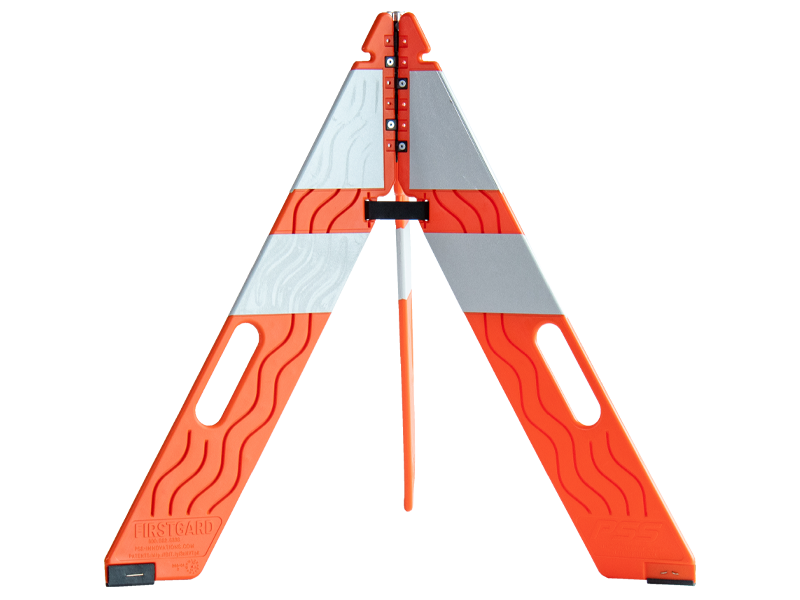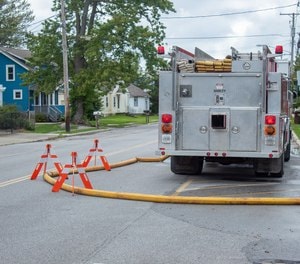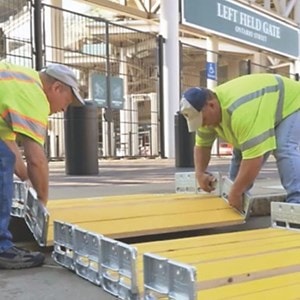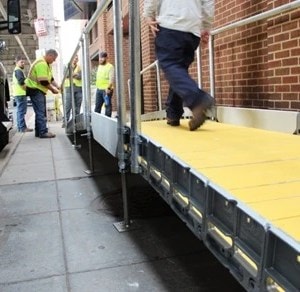Why Are Traffic Cones Shaped Like Cones?
Unveiling the Evolution of Cone Design and the Innovative FirstGard Folding ConeHave you ever found yourself wondering why traffic cones are always shaped like cones? The name certainly implies it, but have you ever questioned if there's a practical reason behind this iconic shape?
When were Traffic Cones Invented?
The use of channelizers to indicate dangerous spots on roadways has a long and evolving history. In the early days of traffic safety, it was customary to use small wooden tripods or more prominent wooden barriers to mark areas that required attention. However, these early markers had their limitations. The smaller tripods were not easily visible and were prone to breaking, while the larger barriers posed a real hazard to passing vehicles.
It was in 1940 that a breakthrough in traffic channelizer design occurred. Charles D. Scanlon, while working as a street painter for the City of Los Angeles, invented a revolutionary marker to keep cars from driving over wet paint. He designed a hollow, conical device that would be readily visible from every angle: the traffic cone.
Scanlon's innovative design was patented in 1943, giving birth to the traffic cone as we know it today. By 1947, traffic cones were in mass production.
Evolving the Traffic Cone
While cones were introduced to the market to provide better visibility for drivers and increase safety in construction zones, reflective sheeting on the sloped, curved surfaces, when used, was challenging to apply and introduced wasted material. The cone’s surface, angled upwardly, also provided a less-than-optimal medium for reflecting light back to motorists. PSS set out to revolutionize the market by solving these issues.
In 1998, PSS developed and launched Navigator, a 42-inch slimline channelizer with a tiered design. Not only did this design feature make the channelizer reflect more light back to its source, but it also made applying the reflective sheeting easier. Within a few years, every significant manufacturer of 42-inch channelizers in the United States incorporated PSS’ tiered design into a 42-inch channelizer of their own.
In 2015, a utility company in Illinois asked PSS to consider designing and developing an alternative to the typical collapsible cone. The company wanted to continue using collapsible cones—a space saver relative to fixed cones on their vehicles—but was frustrated by the current design’s lack of durability and inability to be repaired. The predominant design of collapsible cones used then consisted of an outer fabric supported internally by concentric plastic rings that were vertically oriented and “collapsed" by nesting within each other when pushed downward. Around this same time, a law enforcement office (LEO) from Florida faced a challenge with cones at traffic incident management locations.

Edgardo Santiago had seen and managed his fair share of vehicular crashes. He started his career at the Fort Walton Police Department in Florida. Frequently, he observed motorists either ignore or not see traditional cones set up to divert traffic and then drive through the crash scene. Edgardo resolved to design a traffic control device for incident management that motorists would respect—one that would better protect the crash scenes at which his fellow offices and he worked.
In 2019, after having developed numerous prototypes in his garage, Edgardo approached PSS to help refine and produce his concept for a folding traffic control device that would be more visible and more…well, controlling to traffic! His idea included three panels, which rotated around a center hinge. It was not a barricade, not a barrier and not quite a cone, at least not as we understood cones to look.
In considering taking on the problem, PSS recognized that the same reflectivity challenges that plagued 42-inch conical channelizers prior to PSS’s Navigator design also hampered the effectiveness of 28-inch cones. To solve this, PSS put its innovative spirit to work again. The company set out to create a more visible cone that is compact when stored and commanding when deployed. Furthermore, we aimed to make a more durable solution than existing collapsible, easily repairable cones.
The FirstGard Folding Cone
The result of this quest is the FirstGard folding cone, an innovative, three-panel structure that folds to 1.5 inches thick for convenient storage. This solution was engineered to meet the needs of the first responder, utility and vegetation management markets. When deployed, FirstGard becomes a powerful, commanding presence with a footprint 29-inches wide.
But wait, is FirstGard really a “cone”?
Well, the exterior dimensions of the FirstGard, including the footprint and the space occupied by the design, are indeed conical in shape. FirstGard contains the reflective sheeting prescribed by the Manual on Uniform Traffic Control Devices Chapt 6.F (MUTCD) for cones in width, location and spacing. Most importantly, FirstGard meets the MUTCD definition of a cone, “a flared tubular shape with a base wider than the tip.”

But whether FirstGard is a cone might be the wrong question. Maybe we should be asking how effective FirstGard is at satisfying the function of a cone.
One of the revolutionary features of FirstGard is the unique design of its vertical panels. Unlike traditional cones, FirstGard's panels possess a vertical, flat face, which provides a more optimal angle and larger surface area for reflecting light back to the approaching vehicular source.
Expanding the reflective surface and orienting it more perpendicular to approaching traffic leads to a brighter cone. In fact, laboratory tests demonstrated that FirstGard folding cones can reflect up to twice as much light back to their source compared to traditional cones with the same grade of reflective material, making your location twice as visible and twice as bright.
The Importance of Visibility
In traffic control situations, visibility is paramount. It can be the difference between a safe commute and a dangerous collision. By optimally orienting light reflection, FirstGard helps ensure drivers can see and avoid potential hazards, keeping motorists and workers on the road safe.
However, with its unique design and enhanced reflective capabilities, FirstGard challenges the notion that “cones” must conform to a specific shape to fulfill their purpose. This begs the question: Is it time to reconsider the traditional form of traffic control devices?
For up to 80 years, the cone shape has been synonymous with road safety. Its conical design has served as a universal symbol, easily recognized by drivers and pedestrians alike. However, as technology and innovation continue to transform various industries, it is only natural that traffic control devices evolve as well.
The FirstGard folding cone demonstrates that alternative designs can provide even greater visibility and functionality compared to traditional cones. Its flat-faced, vertical panels not only allow for a larger surface area for light reflection but also contribute to its compact and storage-friendly design. These features challenge the belief that the shape of a cone is essential for its effectiveness in traffic control.
But one thing is for certain: deploying PSS’s FirstGard Folding Cone at your location will make a first impression people will see. Protect your workers and increase your visibility with less effort. Choose FirstGard for a safer and more effective traffic control solution. Place your order today!
Related Articles
-
 The Traffic Safety Cone Has Been In Use For Decades – Here's How It Got Reinvented
The Traffic Safety Cone Has Been In Use For Decades – Here's How It Got Reinvented -
 4 Ways a Portable Pedestrian Ramp Makes the Community more Accessible
4 Ways a Portable Pedestrian Ramp Makes the Community more AccessibleEveryone wants a more accessible community. But the reality is that all communities have unique obstacles that create barriers for those who do not have the same mobility abilities as others. For exam...
-
 INNOVATIVE RAMP PROVIDES ACCESSIBILITY TO SIDEWALK OBSTRUCTION IN D.C. WORK ZONE
INNOVATIVE RAMP PROVIDES ACCESSIBILITY TO SIDEWALK OBSTRUCTION IN D.C. WORK ZONEA residential building in an area with heavy foot traffic needed maintenance, but the tools and machinery needed for the project created a tripping hazard. Closing the sidewalk was not an option so PS...